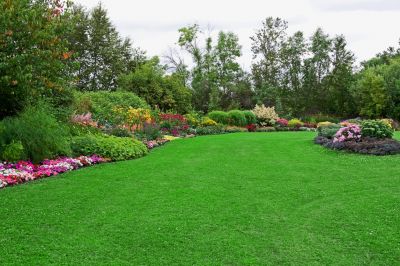

Correct watering is the single most important factor in establishing your new plantings. During the first year after planting, check all plants daily in summer, weekly as the temperatures cool off in Fall. Feel the base of the plants with your finger about 1” below the surface. If it is wet or damp leave it alone. If not follow these instructions – Water when the soil is no longer moist. Slow, deep watering is preferred. A slow trickle of water from a garden hose for 15 – 20 minutes will be adequate for large trees. Water smaller shrubs with the hose set on a medium stream for a count of 30 seconds, perennials and small grasses 10-15 seconds and 10 seconds for annuals. If the weather is hot and dry go back and repeat the process one more time. The smaller the root system a plant has the more necessary it is to keep up with the watering needs. However – excessive, frequent watering is as bad for plants as no water, so check your soil before watering.
Some indicator plants, like hydrangeas, will let you know when your landscape plants need to be checked. They use more water than the others and will look wilted, but they can still be over watered – so feel the base of the plant!
Symptoms of Under-watering – these can also be the symptoms of Over-watering. When the plant receives too much water the root system starts to rot and the roots cannot take water up to the rest of the plant.
Under-Watering
Soil is Dry
Older leaves turn yellow or brown; drop off
Leaves are wilted
Leaves are drooping
Leaves curl
Stems or branches die back
Over-Watering
Leaves are wilted
Leaves are drooping
Stems or branches die back
Soil is constantly damp
Leaves turn lighter green to yellow, may drop off
Young shoots are wilted
Algae and/or mushrooms appear
Leaves are green yet brittle
Presence of soft, smelly rotted tissue
The best time to water is early morning before hot day time temperatures. Watering in the morning allows water to soak deeply into the soil providing the plants with a good amount of water to face the heat of the day. If watering cannot be done in the early morning, late afternoon is also an option. It is important to water early enough in the afternoon so the leaves have time to dry before nightfall. Allowing the leaves to dry before nightfall reduces the development of fungal diseases. You can also avoid this by just watering the base of the plant and not the leaves.
The frequency of watering plant material can vary due to several factors. These factors include, how recently the plants have been installed, the season of the year, plant type, soil conditions, sun, temperature, and drying winds.
Grass seed and sod should not be allowed to completely dry out from the day it is installed until well rooted.
Days between watering
Spring Summer Fall Winter
Trees 7-14 days 5-10 days 7-14 days When Planting
Deciduous Shrubs 5-7 days 3-5 days 5-7 days When Planting
Evergreen Shrubs 5-10 days 5-7 days 5-10 days If dry
Perennials and Grasses 3-5 days 2-3 days 3-5 days N/A
Annuals & Ground Cover 1-3 days 1-2 days 1-3 days N/A
Seed keep moist N/A
Sod keep moist As needed

